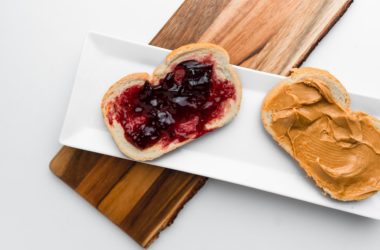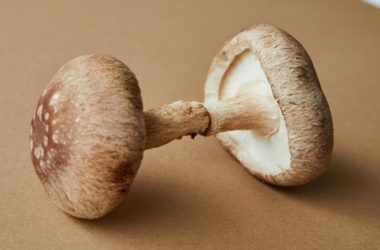Plant-Based Protein: Incorporating Vegan Protein Sources into a Balanced Diet
More and more people are embracing a plant-based diet for various reasons such as compassion for animals, environmental concern, or health reasons. However, one common misconception is that a vegan diet lacks sufficient protein. It is crucial to understand the importance of including protein-rich plants in a balanced vegan diet. In this article, we will discuss the most popular sources of vegan protein and ways to incorporate them into your daily meals.
Lentils
Lentils, legumes with high protein content, are a staple for many vegans. They are a good source of iron, fiber, and folate. There are many types of lentils, such as red, green, and French, each with its unique taste and color. You can include them in soups, stews, or salads, as a side dish, or as a base for vegan burgers.
Here’s a simple recipe to try at home: Lentil stew with kale and carrots. Sauté garlic, onion, kale, and carrots in a pot with olive oil. Add cooked lentils, vegetable broth, and your preferred spices such as cumin, chili, and salt. Simmer for 20 minutes, and you’ll have a wholesome and protein-packed meal.
Edamame
Edamame, or immature soybeans, has a nutty flavor and is rich in protein, fiber, and vitamin E. You can steam or boil them and then sprinkle salt, chili powder, or sesame seeds on top. Edamame makes an excellent appetizer or snack, or you can add it to stir-fries, salads, or noodle dishes.
A quick recipe for edamame hummus involves blending cooked edamame, garlic, lemon juice, olive oil, tahini, and salt. Serve with pita chips or vegetables for a satisfying and healthy dip.
Tofu
Tofu, made from soybean curds, is a versatile and protein-rich plant-based meat alternative. It can absorb any flavor or sauce, making it suitable for a variety of dishes such as stir-fries, curries, and sandwiches. Tofu is low in calories, fat, and sodium but high in calcium, iron, and phosphorus.
A simple recipe for crispy tofu: Press the tofu block to remove excess water, cut into cubes, and toss with cornstarch, garlic powder, and salt. Bake in the oven at 400°F for 30 minutes or until crispy. Serve as a topping for salads or rice bowls.
Quinoa
Quinoa, a pseudo-grain, is a complete protein source, meaning it contains all essential amino acids our bodies need. It is gluten-free, high in antioxidants, and has a nutty flavor. Quinoa is a great substitute for rice, pasta, or couscous and can be used in breakfast bowls, salads, or patties.
Here’s an easy recipe for quinoa salad: Cook quinoa according to instructions, and let it cool. Add chopped veggies such as cucumber, cherry tomatoes, onion, and bell peppers. Drizzle olive oil, lemon juice, salt, and pepper to taste. Chill for an hour, and you’ll have a refreshing and healthy salad.
Chickpeas
Chickpeas, also known as garbanzo beans, are a popular source of plant-based protein, fiber, and complex carbohydrates. They have a nutty taste and are versatile in cooking. You can boil them, roast them, mash them, or use them as a base for hummus, falafel, or vegan curry.
Here’s a recipe for a quick chickpea salad: Combine chickpeas, chopped celery, red onion, and parsley in a bowl. Mix olive oil, lemon juice, salt, and pepper in another bowl and pour it over the chickpea mixture. Toss and serve as a filling for pita pockets or as a side dish.
Almonds
Almonds are a rich source of protein, healthy fats, fiber, and vitamin E. They have a crunchy texture and a slightly sweet taste. Almonds can be eaten as a snack or a topping for oatmeal, yogurt, or smoothies. They can also be used in baking, making almond milk or almond butter.
Here’s a recipe for almond butter: Toast almonds in the oven until golden brown, and let them cool. Blend them in a food processor with a pinch of salt until you get a smooth butter. Transfer it to a jar and store in the fridge for up to a month. Spread almond butter on toast, fruits, or use it as a dip for veggies.
Chia Seeds
Chia seeds are tiny black or white seeds packed with protein, fiber, omega-3 fatty acids, and antioxidants. They absorb liquid and form a gel-like consistency, making them an ideal ingredient for puddings, smoothies, or oatmeal. Chia seeds can also be used as an egg replacer in vegan baking.
Here’s a recipe for a chia pudding: Mix equal parts of chia seeds and almond milk in a jar, add sweetener of your choice (e.g., maple syrup or honey) and stir well. Chill overnight, and you’ll have a nutritious and tasty breakfast pudding.
Hemp Seeds
Hemp seeds are a complete protein source, similar to quinoa. They are highly nutritious, gluten-free, and rich in healthy fats, fiber, and minerals. Hemp seeds have a nutty flavor and crunchy texture and can be sprinkled on salads, soups, or smoothies.
Here’s a recipe for a hemp seed smoothie: Blend hemp seeds, frozen berries, almond milk, and honey until smooth. Adjust the liquid consistency as needed, and enjoy this protein-packed and refreshing beverage.
Conclusion
Incorporating these vegan protein sources into your diet can help you maintain a balanced and healthy lifestyle. However, it is essential to consult a healthcare professional or registered dietitian before making any radical changes to your eating habits. By adding lentils, edamame, tofu, quinoa, chickpeas, almonds, chia seeds, hemp seeds, and other plant-based protein sources to your meals, you can enjoy a diverse range of flavors and nutrients while reducing your carbon footprint and supporting animal welfare.





